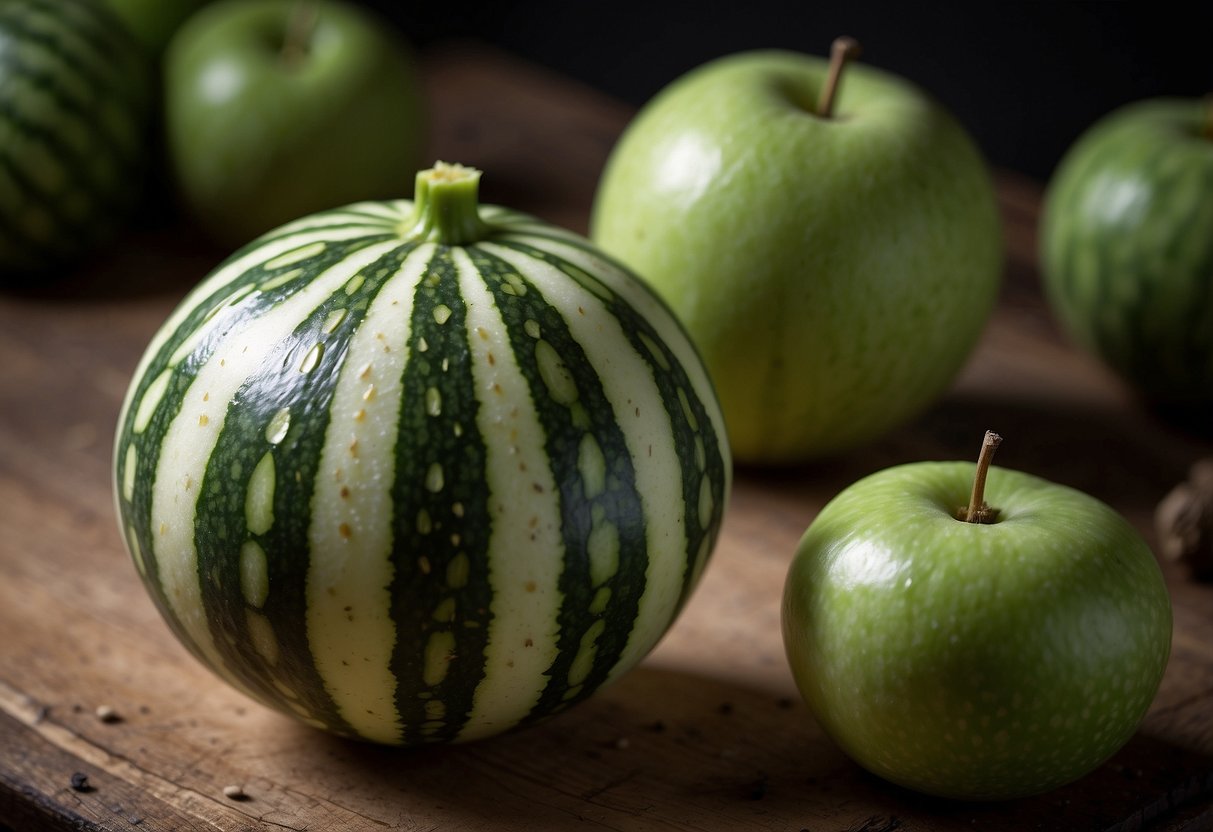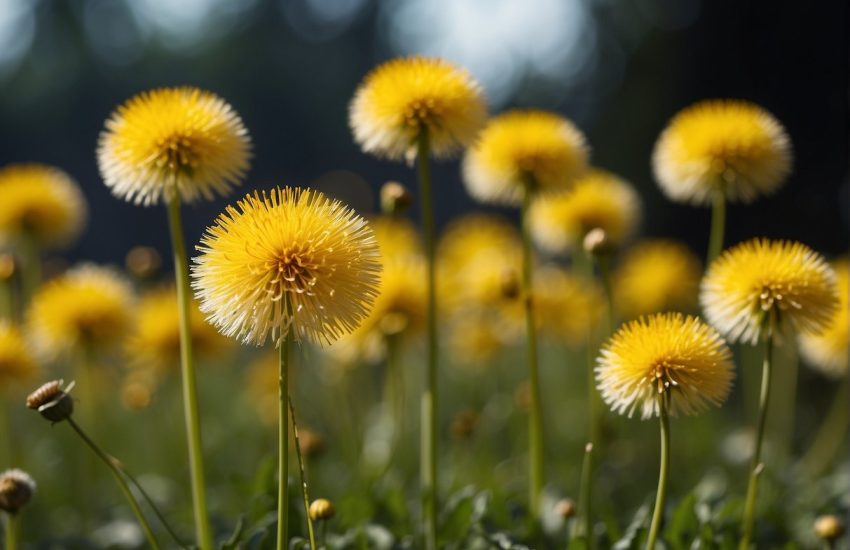What Looks Like a Watermelon But Isn’t: Uncovering the Mystery of Pepino Melons
Watermelon is a delicious and refreshing fruit that is enjoyed by many during the hot summer months. However, not all round fruits with green and striped rinds are watermelons. In fact, there are several other fruits and vegetables that can easily be mistaken for watermelons due to their similar appearance.

One of these fruits is the wax gourd, also known as winter melon or ash gourd. This large, oblong-shaped fruit has a green and striped rind that looks like a watermelon’s. However, its flesh is white and spongy, and its seeds are small and white. Wax gourd is commonly used in Asian cuisine, and its flesh is often cooked in soups, stews, and curries.
Another fruit that can be mistaken for a watermelon is the casaba melon. This large, round fruit has a green and striped rind that looks similar to a watermelon’s. However, its flesh is white or yellow, and its seeds are small and white. Casaba melon has a sweet and mild flavor, and it is often eaten fresh or used in salads and smoothies.
Identifying Watermelon Look-Alikes
Watermelon is a popular summer fruit with a distinct appearance, but there are a few other fruits and vegetables that can be mistaken for watermelon. Here are some of the most common watermelon look-alikes and how to tell them apart.
Cucamelon: The Tiny Watermelon Impersonator
Cucamelon, also known as Mexican sour gherkin or mouse melon, is a small fruit that looks like a miniature watermelon but tastes like a cucumber with a hint of lime. It is about the size of a grape and has a green and white striped skin with a crunchy texture. Cucamelon is rich in vitamin C, antioxidants, and fiber, and is often used in salads, cocktails, and pickling. To distinguish cucamelon from watermelon, look for its smaller size and striped skin.
Citron Melon: A Wild Cousin
Citron melon, also known as citron watermelon, is a wild cousin of watermelon that is native to Africa. It has a similar appearance to watermelon, with a green rind and red flesh, but it is much larger and has a thicker rind. Citron melon is not as sweet as watermelon and is often used in preserves and candied fruit. To distinguish citron melon from watermelon, look for its larger size and thicker rind.
Other Melon Varieties
There are many other melon varieties that can be mistaken for watermelon, including cantaloupe, honeydew, and casaba melon. These melons are all part of the Cucurbitaceae family, which also includes watermelon. To distinguish these melons from watermelon, look for their different shapes, colors, and textures. Cantaloupe has a rough, web-like skin and a sweet, orange flesh. Honeydew has a smooth, waxy skin and a pale green flesh. Casaba melon has a wrinkled, yellow skin and a sweet, white flesh.
In conclusion, while watermelon is a unique and delicious fruit, there are many other fruits and vegetables that can be mistaken for it. By knowing how to identify these watermelon look-alikes, you can expand your culinary horizons and try new and exciting foods.
Cultivation and Harvesting Tips
Growing Conditions for Watermelon Mimics
Growing watermelon mimics requires similar conditions to growing actual watermelons. These plants thrive in full sun and require well-drained soil that is rich in organic matter. If planting in containers, ensure that the soil is loose and moisture-retentive. The gourd family, which includes watermelon mimics, originated in Central America and requires warm temperatures to grow. Ideal temperatures range between 70°F to 90°F (21°C to 32°C) during the day and above 50°F (10°C) at night.
Harvesting and Storing Faux Watermelons
Harvesting watermelon mimics is similar to harvesting actual watermelons. The fruit is ripe when the stem begins to dry and turn brown. To ensure the fruit is prime, look for a creamy yellow spot, also known as a field spot, on the bottom of the fruit. Once harvested, watermelon mimics should be stored in an airtight container in the fridge. These fruits have a high water content and are low in calories, making them a healthy snack option.
When planting watermelon mimics, it is important to stake the plants to prevent them from sprawling on the ground. Additionally, watermelon mimics should not be picked until they are ripe. Bruises and dents can cause the fruit to spoil quickly, decreasing the water content and fiber.
Similar to pickled watermelon rinds, watermelon mimics can be pickled and stored for later consumption. However, it is important to note that these fruits do not have an expiration date. Therefore, it is important to store them properly in an airtight container in the fridge to prevent spoilage.
In summary, growing watermelon mimics requires full sun, well-drained soil, and warm temperatures. Harvesting and storing these fruits is similar to actual watermelons. Staking the plants and waiting until they are ripe can prevent bruising and dents. Watermelon mimics can be pickled and stored in an airtight container in the fridge for later consumption.


